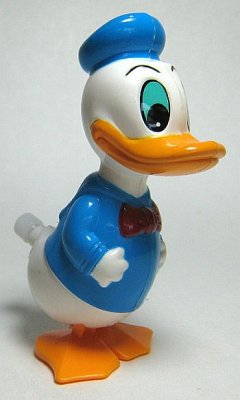The design for this was to be a regular flashlight, with an element of implied movement in the front, end, and buttons. The head has cutouts rotating one way, the tails cutouts rotate opposite, then the buttons decrease in size moving towards the tail. The middle rings exist to section off the parts and imply that they could twist.
The base model was the flashlight created by the tutorial, slightly enlarged. Cylinders were created around the head, then they had one end rotated to create the twisting effect. Those cylinders were mirrored over to the back and scaled down - before being subtracted from the base model. The buttons were created from two cylinders combined each, progressively sized down. The rings were projected lines being the basis for pipes that were then either subtracted or added to the base model.
The material choices were neutral in color, with colored accent pieces being designated to the important elements that are the buttons. The flashlight is designed to be contrasting, with the wooden rings being placed to help create a median color and unique texture.























































